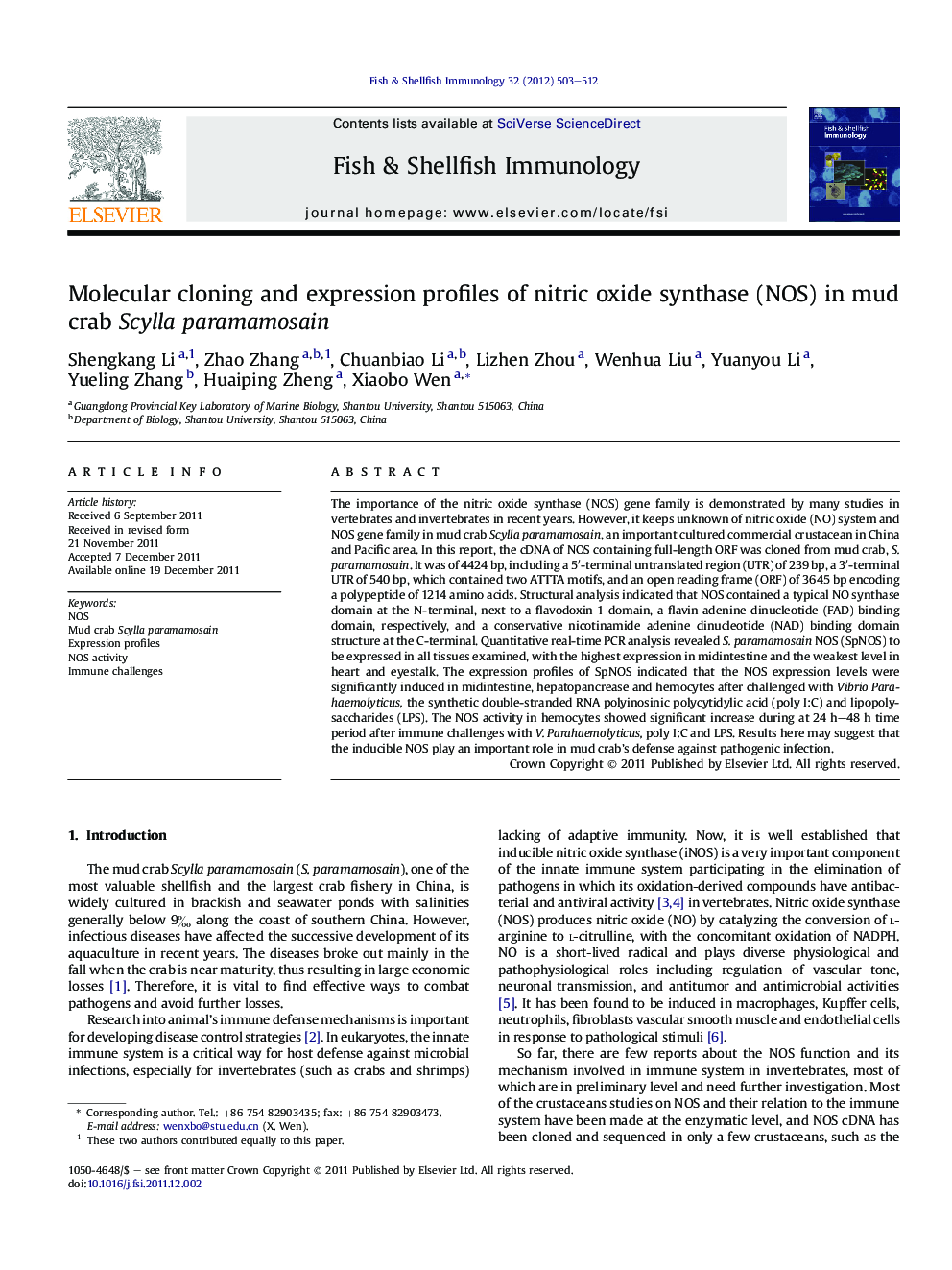| کد مقاله | کد نشریه | سال انتشار | مقاله انگلیسی | نسخه تمام متن |
|---|---|---|---|---|
| 2432363 | 1106792 | 2012 | 10 صفحه PDF | دانلود رایگان |

The importance of the nitric oxide synthase (NOS) gene family is demonstrated by many studies in vertebrates and invertebrates in recent years. However, it keeps unknown of nitric oxide (NO) system and NOS gene family in mud crab Scylla paramamosain, an important cultured commercial crustacean in China and Pacific area. In this report, the cDNA of NOS containing full-length ORF was cloned from mud crab, S. paramamosain. It was of 4424 bp, including a 5′-terminal untranslated region (UTR) of 239 bp, a 3′-terminal UTR of 540 bp, which contained two ATTTA motifs, and an open reading frame (ORF) of 3645 bp encoding a polypeptide of 1214 amino acids. Structural analysis indicated that NOS contained a typical NO synthase domain at the N-terminal, next to a flavodoxin 1 domain, a flavin adenine dinucleotide (FAD) binding domain, respectively, and a conservative nicotinamide adenine dinucleotide (NAD) binding domain structure at the C-terminal. Quantitative real-time PCR analysis revealed S. paramamosain NOS (SpNOS) to be expressed in all tissues examined, with the highest expression in midintestine and the weakest level in heart and eyestalk. The expression profiles of SpNOS indicated that the NOS expression levels were significantly induced in midintestine, hepatopancrease and hemocytes after challenged with Vibrio Parahaemolyticus, the synthetic double-stranded RNA polyinosinic polycytidylic acid (poly I:C) and lipopolysaccharides (LPS). The NOS activity in hemocytes showed significant increase during at 24 h–48 h time period after immune challenges with V. Parahaemolyticus, poly I:C and LPS. Results here may suggest that the inducible NOS play an important role in mud crab’s defense against pathogenic infection.
► NOS contained full-length ORF was cloned from the mud crab Scylla paramamosain.
► NOS mRNA were induced in midintestine, hepatopancrease and hemocytes.
► The NOS activity in hemocytes showed significant increase after immune challenges.
Journal: Fish & Shellfish Immunology - Volume 32, Issue 4, April 2012, Pages 503–512